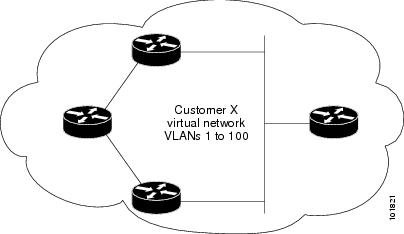Feature History and Information for Layer 2 Protocol Tunneling
The following table provides release information about the feature or features described in this module. This table lists only the software release that introduced support for a given feature in a given software release train. Unless noted otherwise, subsequent releases of that software release train also support that feature.
|
Feature |
Release |
Description |
|---|---|---|
|
L2 Protocol Tunnel CDP under LAN Switching Interface |
Cisco IOS XE Bengaluru 17.4.1a |
You can now configure L2CP X for tunneling so that it forwards all other l2cp with the DST MAC 01:00:0C:CD:CD:D0 except X with the DST MAC 01:00:0C:CD:CD:D0 on the following platforms:
|
|
Layer 2 Protocol Tunneling |
Cisco IOS XE Gibraltar 16.12.1 |
This feature was introduced on the following platforms:
|



 Feedback
Feedback